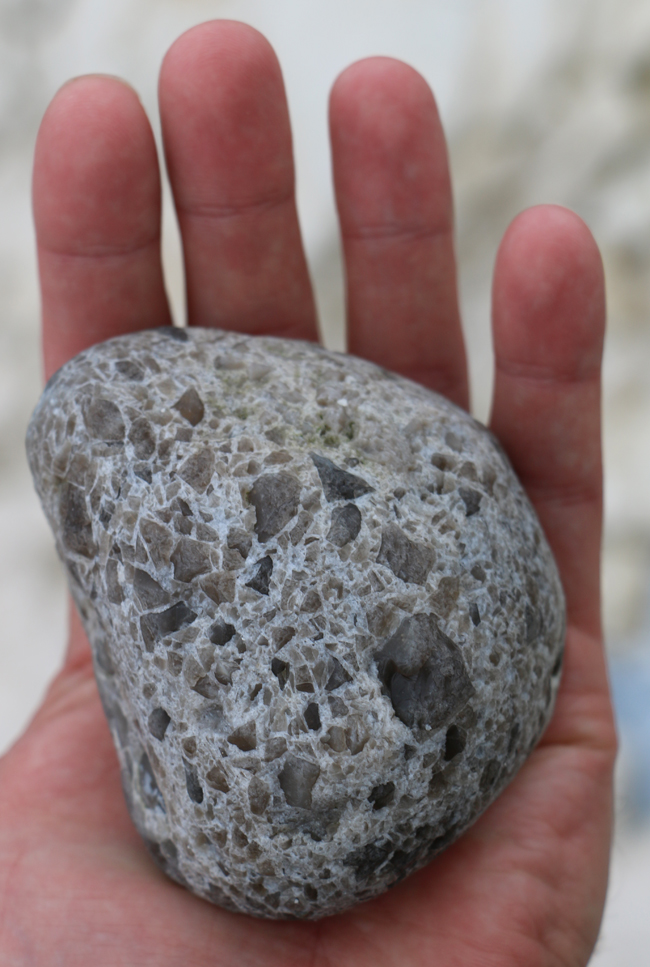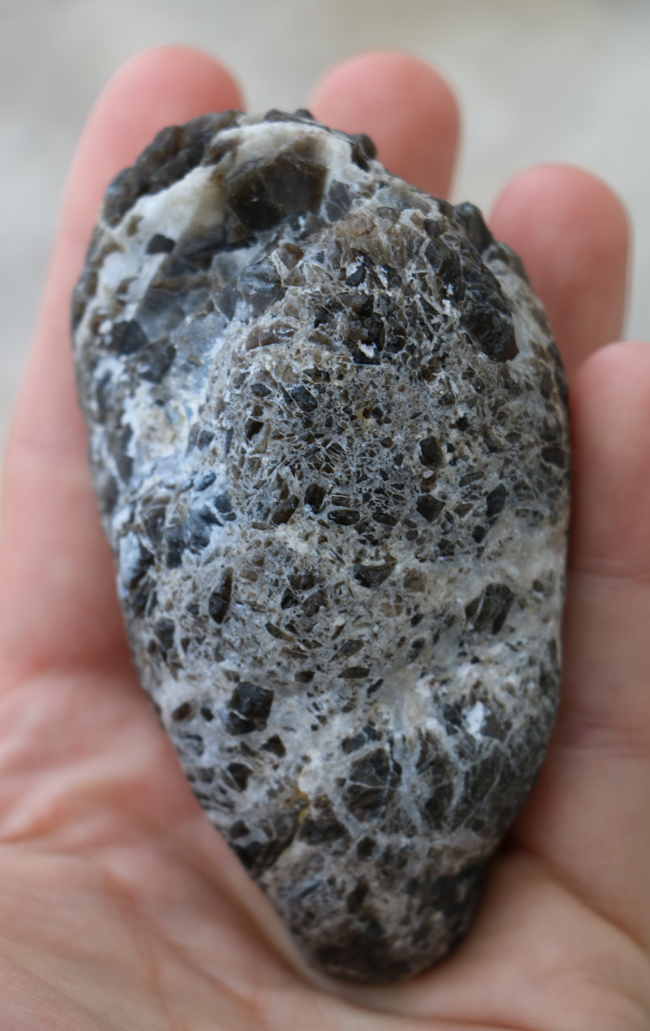My GigaPan expedition has landed at Rathlin Island, north of Northern Ireland, within view of Scotland, for a few days. The beach on Church Bay is cobble-covered and steep, and the cobbles reflect the island’s geology, with some anthropogenic components thrown in for flavor:
Link GigaPan by Callan Bentley
But I was struck by these two cobbles, each showing a pervasively shattered breccia of chert:
To me, that is not only as lovely as a mosaic, but it’s indicative of an intriguing tale. The rocks in this part of the world are a layer cake of sediments and lavas, and so I wonder what processes were responsible for generating these shattered cobbles. The chert is a diagenetic feature within the Ulster White Limestone (“the Chalk” – namesake of the Cretaceous), but something violent must have happened to them after the chert precipitated in order to make the breccia. What was that? Some sort of faulting? There are several faults mapped on the island, as well as several intrusions that punch through. Later, of course, uplift brought the breccia-bearing rock to the surface, where it birthed a cobble or two, and these were subsequently tumbled in the surf to attain this fine, rounded morphology.
The presence of these breccias as a minor component of the beach sediment will make me take a closer look at the cliffside chalk exposures when I visit them tomorrow.


